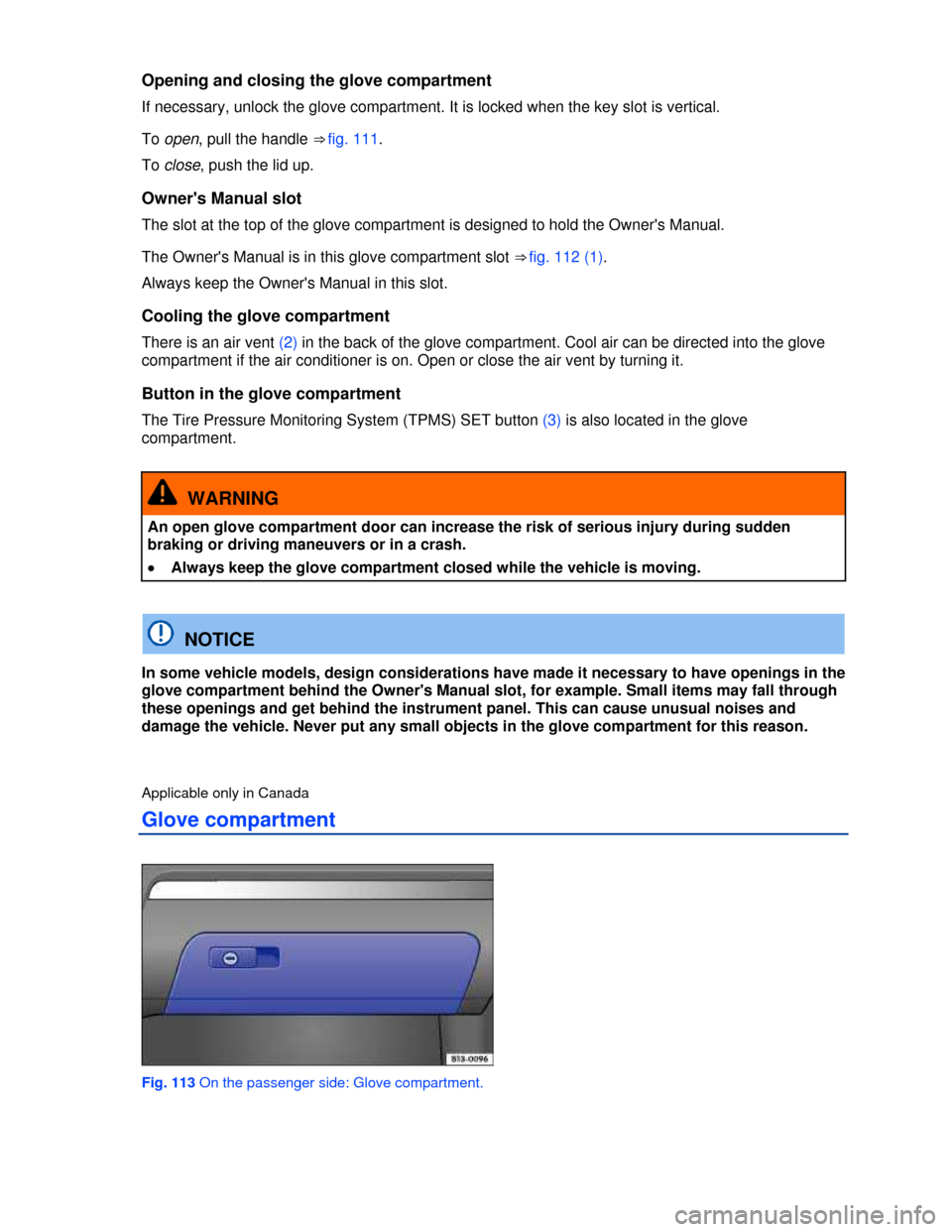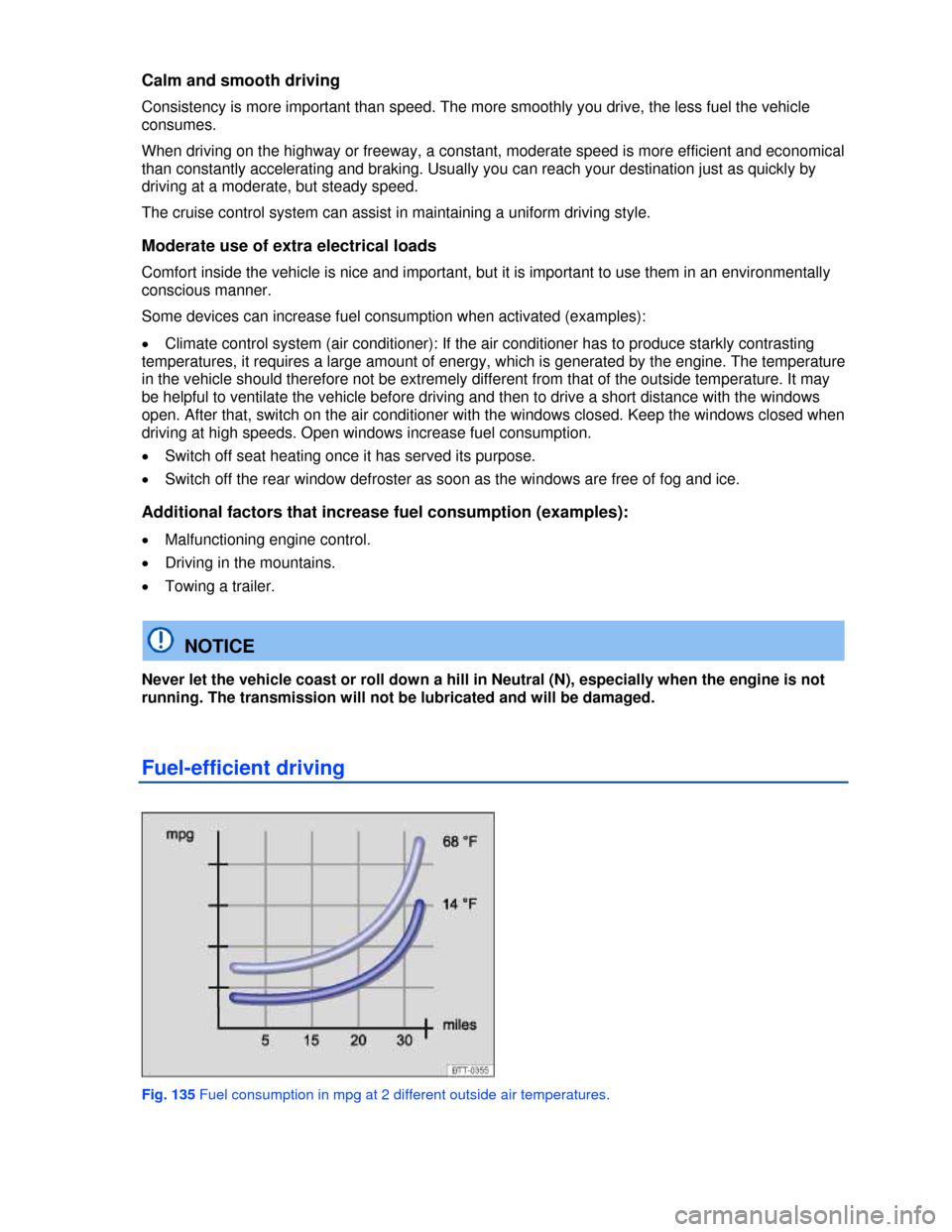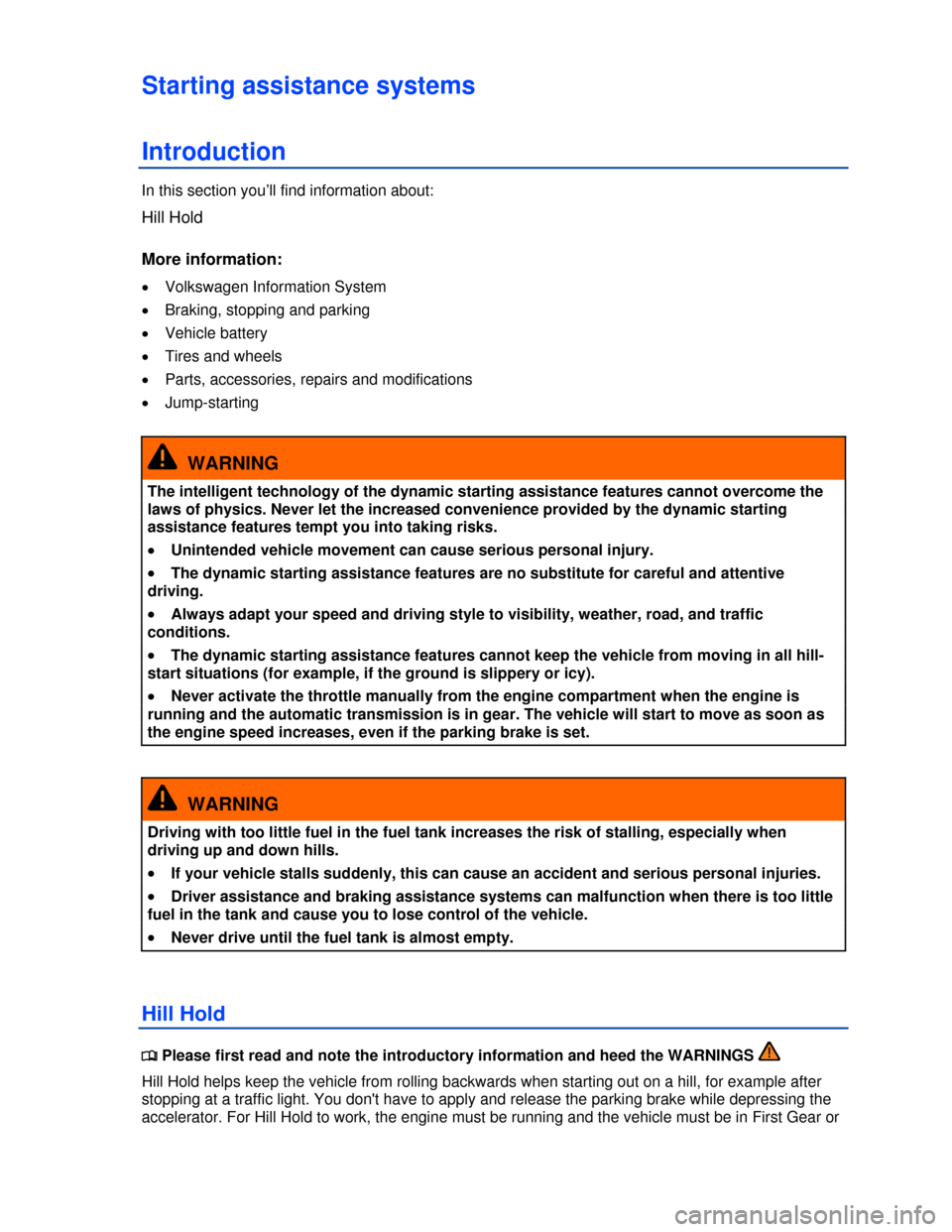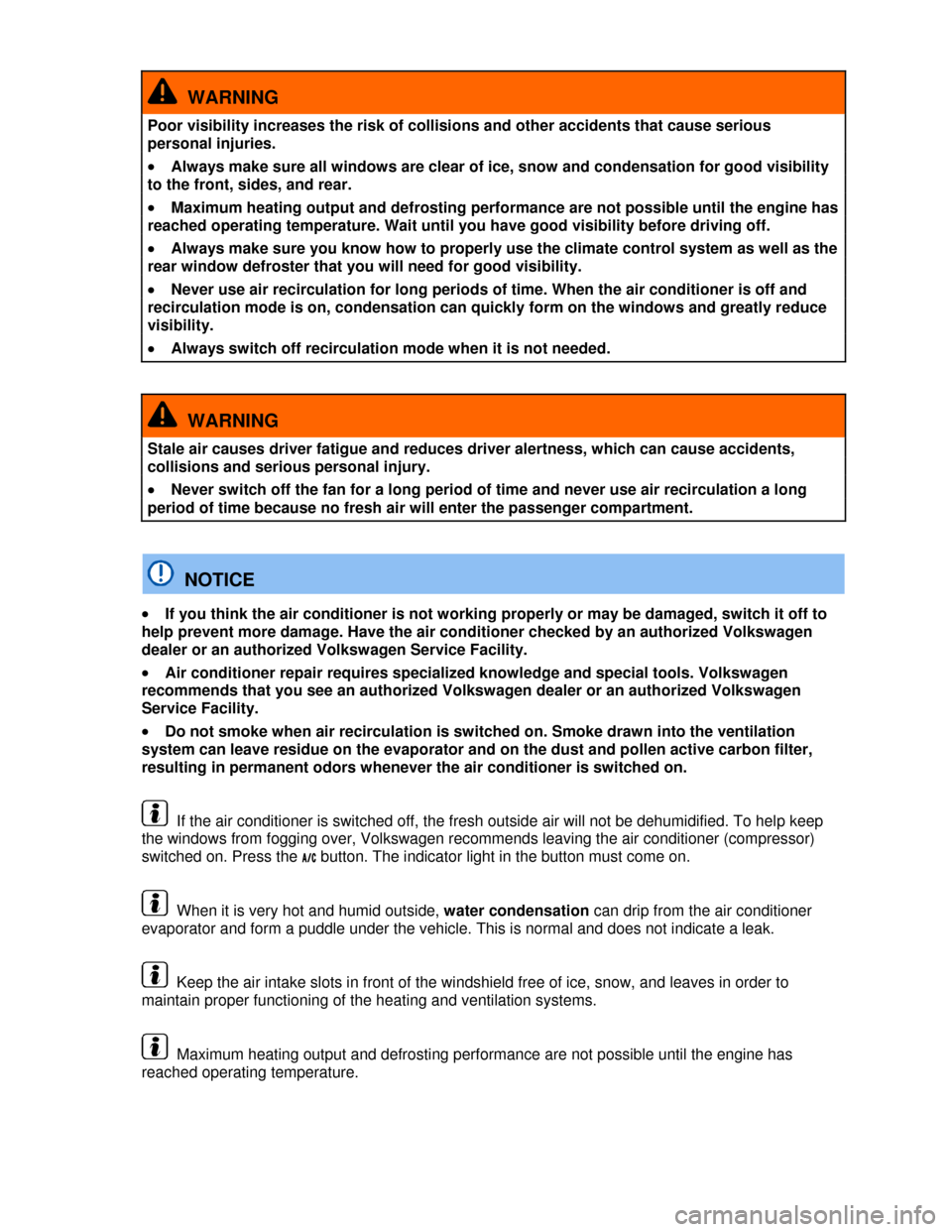2013 VOLKSWAGEN GOLF GTI air condition
[x] Cancel search: air conditionPage 153 of 319

Trailer towing
Introduction
In this section you’ll find information about:
Technical requirements
Hitching up and connecting a trailer
Loading the trailer
Driving with a trailer
Ball mount
Retrofitting a trailer hitch
Maximum permissible trailer weight
Obey country-specific requirements about trailer towing and trailer hitches.
Volkswagen does not recommend installing a trailer hitch on your vehicle. Your Volkswagen was
mainly designed for carrying passengers. If you plan to tow a trailer, please remember your vehicle will
be performing a job for which it was not primarily intended. The additional load will affect durability,
handling, fuel economy, and performance, and may require the vehicle to be serviced more often.
Trailer towing not only places more stress on the vehicle, it calls for more concentration from the
driver. Always follow the operating and driving instructions given, and use common sense.
Under winter conditions, install winter tires on the vehicle and the trailer.
Tongue weight
The maximum permissible trailer tongue weight exerted on the ball mount must not exceed 200 lbs
(91 kg).
More information:
�x Power locking and closing system
�x Anti-theft alarm system
�x Lights and vision
�x Braking, stopping, and parking
�x Saving fuel and helping the environment
�x Starting assistance systems
�x Tires and wheels
�x Parts, accessories, repairs and modifications
WARNING
Riding in a trailer is dangerous and may be illegal.
Page 154 of 319

WARNING
Improper use of the trailer hitch can cause accidents and injuries. An improperly installed,
incorrect, or damaged trailer hitch can cause the trailer to separate from the towing vehicle
and cause serious personal injuries.
�x Only use an undamaged, properly mounted trailer hitch.
�x Never repair or modify the trailer hitch.
�x To reduce the risk of injury in rear-end collisions, and the risk to pedestrians and cyclists
when the vehicle is parked, always remove the ball mount when you are not towing a trailer.
�x Never install a “weight distributing” or “load equalizing” trailer hitch on your vehicle. The
vehicle was not designed for these kinds of trailer hitches. The trailer hitch attachment can
fail, causing the trailer to tear loose from the vehicle.
WARNING
Improper trailer towing can cause loss of vehicle control and serious personal injury.
�x Driving with a trailer and carrying heavy or large things can change the way the vehicle
handles, increase the distance it needs to stop safely, and cause accidents.
�x Always secure the load properly with suitable and undamaged straps so that the load will
not shift.
�x Always adapt your speed and driving to the heavier load and the weight distribution in the
vehicle. Take road, weather, traffic, and visibility conditions into account as well.
�x Reduce your speed even more than you otherwise would when going downhill and under
unfavorable load, weather, or wind conditions.
�x Trailers with a high center of gravity tip more easily than trailers with a low center of
gravity.
�x Always avoid sudden maneuvers and hard braking.
�x Be especially careful when passing other vehicles.
�x Reduce speed immediately if the trailer shows the slightest sign of swaying.
�x Never try to stop the swaying by accelerating.
�x Always obey speed limits. In some areas, the speed limits for vehicles towing trailers are
lower than for vehicles without trailers. Never drive faster than 50 mph (80 km/h; under
exceptional circumstances 60 mph - 100 km/h) when towing a trailer. This applies even if the
local speed limit is higher.
If you are driving a new vehicle or a vehicle with a new or rebuilt engine, do not tow a trailer
during the break-in period, about 600 miles (1000 km)
If you tow a trailer, your vehicle may need maintenance more often because of the extra load it
has to move.
When you are not towing, remove the trailer hitch ball. This helps keep the trailer hitch from
causing damage to your vehicle and to others if your vehicle is hit from behind.
Some models need a trailer hitch to tow or tow-start other vehicles. You may want to always
carry the ball mount in the vehicle after it has been removed. Be sure to stow it securely.
Page 168 of 319

Opening and closing the glove compartment
If necessary, unlock the glove compartment. It is locked when the key slot is vertical.
To open, pull the handle ⇒ fig. 111.
To close, push the lid up.
Owner's Manual slot
The slot at the top of the glove compartment is designed to hold the Owner's Manual.
The Owner's Manual is in this glove compartment slot ⇒ fig. 112 (1).
Always keep the Owner's Manual in this slot.
Cooling the glove compartment
There is an air vent (2) in the back of the glove compartment. Cool air can be directed into the glove
compartment if the air conditioner is on. Open or close the air vent by turning it.
Button in the glove compartment
The Tire Pressure Monitoring System (TPMS) SET button (3) is also located in the glove
compartment.
WARNING
An open glove compartment door can increase the risk of serious injury during sudden
braking or driving maneuvers or in a crash.
�x Always keep the glove compartment closed while the vehicle is moving.
NOTICE
In some vehicle models, design considerations have made it necessary to have openings in the
glove compartment behind the Owner's Manual slot, for example. Small items may fall through
these openings and get behind the instrument panel. This can cause unusual noises and
damage the vehicle. Never put any small objects in the glove compartment for this reason.
Applicable only in Canada
Glove compartment
Fig. 113 On the passenger side: Glove compartment.
Page 188 of 319

Calm and smooth driving
Consistency is more important than speed. The more smoothly you drive, the less fuel the vehicle
consumes.
When driving on the highway or freeway, a constant, moderate speed is more efficient and economical
than constantly accelerating and braking. Usually you can reach your destination just as quickly by
driving at a moderate, but steady speed.
The cruise control system can assist in maintaining a uniform driving style.
Moderate use of extra electrical loads
Comfort inside the vehicle is nice and important, but it is important to use them in an environmentally
conscious manner.
Some devices can increase fuel consumption when activated (examples):
�x Climate control system (air conditioner): If the air conditioner has to produce starkly contrasting
temperatures, it requires a large amount of energy, which is generated by the engine. The temperature
in the vehicle should therefore not be extremely different from that of the outside temperature. It may
be helpful to ventilate the vehicle before driving and then to drive a short distance with the windows
open. After that, switch on the air conditioner with the windows closed. Keep the windows closed when
driving at high speeds. Open windows increase fuel consumption.
�x Switch off seat heating once it has served its purpose.
�x Switch off the rear window defroster as soon as the windows are free of fog and ice.
Additional factors that increase fuel consumption (examples):
�x Malfunctioning engine control.
�x Driving in the mountains.
�x Towing a trailer.
NOTICE
Never let the vehicle coast or roll down a hill in Neutral (N), especially when the engine is not
running. The transmission will not be lubricated and will be damaged.
Fuel-efficient driving
Fig. 135 Fuel consumption in mpg at 2 different outside air temperatures.
Page 194 of 319

Starting assistance systems
Introduction
In this section you’ll find information about:
Hill Hold
More information:
�x Volkswagen Information System
�x Braking, stopping and parking
�x Vehicle battery
�x Tires and wheels
�x Parts, accessories, repairs and modifications
�x Jump-starting
WARNING
The intelligent technology of the dynamic starting assistance features cannot overcome the
laws of physics. Never let the increased convenience provided by the dynamic starting
assistance features tempt you into taking risks.
�x Unintended vehicle movement can cause serious personal injury.
�x The dynamic starting assistance features are no substitute for careful and attentive
driving.
�x Always adapt your speed and driving style to visibility, weather, road, and traffic
conditions.
�x The dynamic starting assistance features cannot keep the vehicle from moving in all hill-
start situations (for example, if the ground is slippery or icy).
�x Never activate the throttle manually from the engine compartment when the engine is
running and the automatic transmission is in gear. The vehicle will start to move as soon as
the engine speed increases, even if the parking brake is set.
WARNING
Driving with too little fuel in the fuel tank increases the risk of stalling, especially when
driving up and down hills.
�x If your vehicle stalls suddenly, this can cause an accident and serious personal injuries.
�x Driver assistance and braking assistance systems can malfunction when there is too little
fuel in the tank and cause you to lose control of the vehicle.
�x Never drive until the fuel tank is almost empty.
Hill Hold
�
Page 196 of 319

Cruise Control System (CCS)
Introduction
In this section you’ll find information about:
Indicator lights
Indicator lights
Cruise control operation
The Cruise Control System (CCS) helps maintain an individually stored constant speed when driving
above about 15 mph (20 km/h).
The CCS slows down the vehicle only by reducing the flow of fuel to the engine, not by braking ⇒ .
More information:
�x Shifting gears
�x Parts, accessories, repairs and modifications
WARNING
Using the cruise control when it is not possible to drive safely at a constant speed can be
dangerous and can lead to an accident and serious personal injuries.
�x Never use cruise control when driving in heavy or varying traffic or when you cannot keep
a safe distance between you and the vehicles ahead of you.
�x Never use cruise control on steep, winding, or slippery roads (such gravel roads, wet
roads, or snowy or icy roads) or on roads with standing water.
�x Never use cruise control when driving off-road or on unpaved roads.
�x Always adjust your speed and the distance you keep between you and the vehicles ahead
of you to the road, traffic, weather, and visibility conditions.
�x To help prevent unintended operation of cruise control, switch the system off when it is
not being used.
�x It is dangerous to use the Resume feature when the previously set speed is too high for
the existing road, traffic, or weather conditions.
�x When going downhill, the cruise control may not be able to maintain a constant speed.
The vehicle will speed up because of its own weight. Downshift and/or use the foot brake to
slow the vehicle.
Applicable only in the United States
Indicator lights
Fig. 137 In the instrument cluster display: Cruise control status indications.
Page 205 of 319

Applicable only in the United States
Heating and air conditioning
Introduction
In this section you’ll find information about:
Controls
Controls
Air conditioner operation
Air vents
Air recirculation
Air recirculation
Manual air conditioning (AC) and Climatronic
Your vehicle is equipped either with a Manual AC climate control system or a Climatronic
climate control system.
On vehicles with Climatronic climate control, Climatronic information appears in the Climatronic display
and/or on the screen of the factory-installed Radio system or Radio & Navigation system.
The temperature units (Fahrenheit or Celsius) in the factory-installed Radio system or Radio &
Navigation system screen can be changed in the Settings menu in the Premium instrument cluster
display in appropriately equipped vehicles.
The dust and pollen filter
The dust and pollen filter with an activated carbon insert reduces the entry of pollutants into the
passenger compartment.
The dust and pollen filter must be replaced at the intervals recommended in ⇒ Booklet Warranty and
Maintenance so that the air conditioner can work properly.
If the effectiveness of the filter decreases prematurely due to operating the vehicle where the outside
air is heavily polluted, the dust and pollen filter should be replaced more frequently than indicated.
More information:
�x Exterior views
�x Passenger compartment
�x Volkswagen Information System
�x Seat functions
�x Windshield wiper and washer
�x Starting and stopping the engine
�x Exterior care and cleaning
Page 206 of 319

WARNING
Poor visibility increases the risk of collisions and other accidents that cause serious
personal injuries.
�x Always make sure all windows are clear of ice, snow and condensation for good visibility
to the front, sides, and rear.
�x Maximum heating output and defrosting performance are not possible until the engine has
reached operating temperature. Wait until you have good visibility before driving off.
�x Always make sure you know how to properly use the climate control system as well as the
rear window defroster that you will need for good visibility.
�x Never use air recirculation for long periods of time. When the air conditioner is off and
recirculation mode is on, condensation can quickly form on the windows and greatly reduce
visibility.
�x Always switch off recirculation mode when it is not needed.
WARNING
Stale air causes driver fatigue and reduces driver alertness, which can cause accidents,
collisions and serious personal injury.
�x Never switch off the fan for a long period of time and never use air recirculation a long
period of time because no fresh air will enter the passenger compartment.
NOTICE
�x If you think the air conditioner is not working properly or may be damaged, switch it off to
help prevent more damage. Have the air conditioner checked by an authorized Volkswagen
dealer or an authorized Volkswagen Service Facility.
�x Air conditioner repair requires specialized knowledge and special tools. Volkswagen
recommends that you see an authorized Volkswagen dealer or an authorized Volkswagen
Service Facility.
�x Do not smoke when air recirculation is switched on. Smoke drawn into the ventilation
system can leave residue on the evaporator and on the dust and pollen active carbon filter,
resulting in permanent odors whenever the air conditioner is switched on.
If the air conditioner is switched off, the fresh outside air will not be dehumidified. To help keep
the windows from fogging over, Volkswagen recommends leaving the air conditioner (compressor)
switched on. Press the �!�